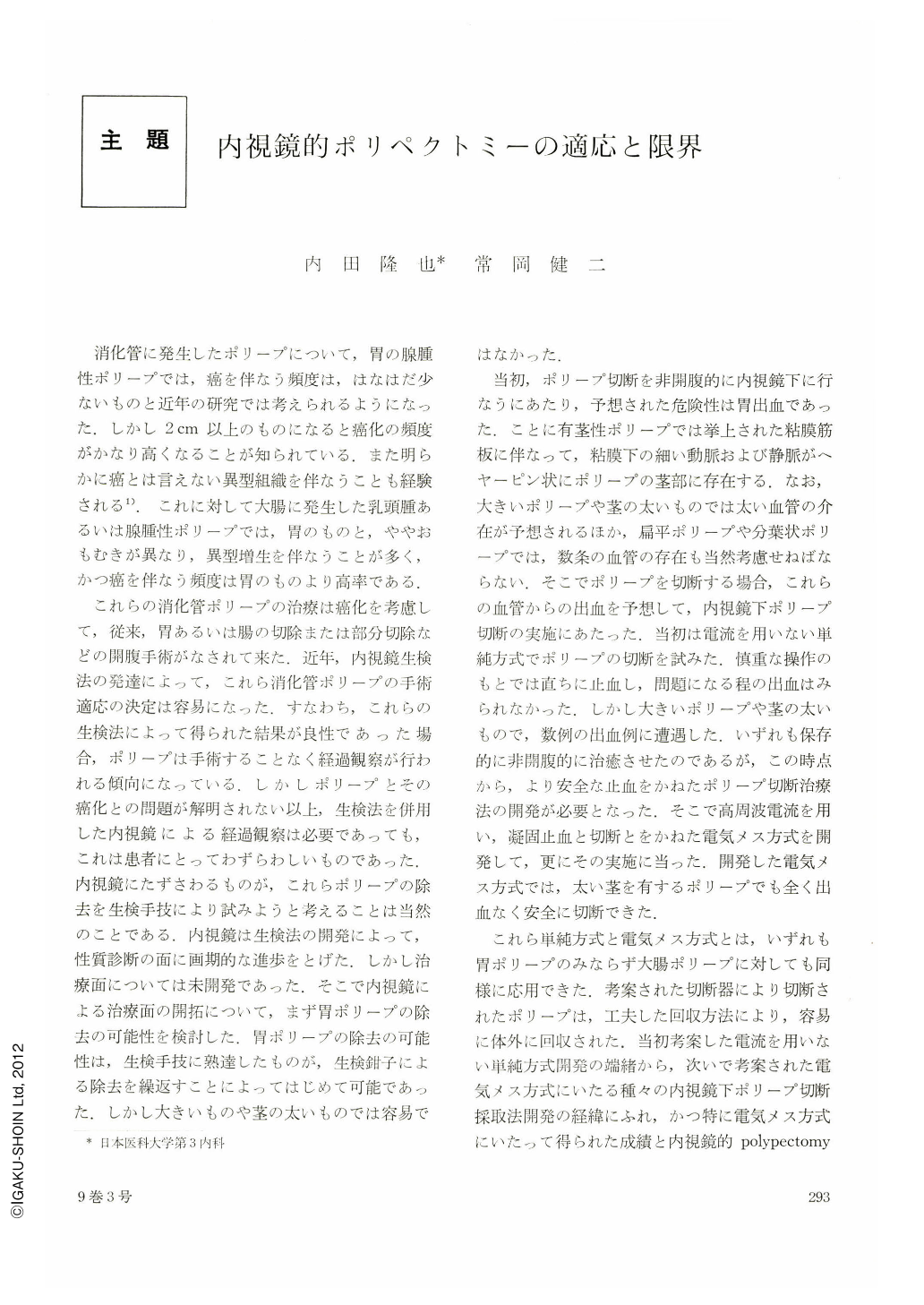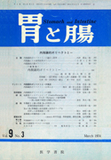Japanese
English
- 有料閲覧
- Abstract 文献概要
- 1ページ目 Look Inside
消化管に発生したポリープについて,胃の腺腫性ポリープでは,癌を伴なう頻度は,はなはだ少ないものと近年の研究では考えられるようになった.しかし2cm以上のものになると癌化の頻度がかなり高くなることが知られている.また明らかに癌とは言えない異型組織を伴なうことも経験される1).これに対して大腸に発生した乳頭腫あるいは腺腫性ポリープでは,胃のものと,ややおもむきが異なり,異型増生を伴なうことが多く,かつ癌を伴なう頻度は胃のものより高率である.
これらの消化管ポリープの治療は癌化を考慮して,従来,胃あるいは腸の切除または部分切除などの開腹手術がなされて来た.近年,内視鏡生検法の発達によって,これら消化管ポリープの手術適応の決定は容易になった.すなわち,これらの生検法によって得られた結果が良性であった場合,ポリープは手術することなく経過観察が行われる傾向になっている.しかしポリープとその癌化との問題が解明されない以上,生検法を併用した内視鏡による経過観察は必要であっても,これは患者にとってわずらわしいものであった.内視鏡にたずさわるものが,これらポリープの除去を生検手技により試みようと考えることは当然のことである.内視鏡は生検法の開発によって,性質診断の面に画期的な進歩をとげた.しかし治療面については未開発であった.そこで内視鏡による治療面の開拓について,まず胃ポリープの除去の可能性を検討した.胃ポリープの除去の可能性は,生検手技に熟達したものが,生検鉗子による除去を繰返すことによってはじめて可能であった.しかし大きいものや茎の太いものでは容易ではなかった.
Polyp of the digestive tract, especially of the stomach and large intestine, has been treated so far by resecting, at times partially, the affected portion. Recent advances in endoscopy have induced us to apply them to therapeutic measures. At first we worked out type A instrument of gastric polyp using a single wire loop, with which we succeeded on March 29, 1968, in wringing a gastric polyp off the mucosal surface and recover it. It was the first attempt of this kind in the world. This was a complete biopsy replacing a partial one. Next we devised another instrument (type B), easy to operate, using entwined wire loop, followed by yet another (type C) equipped with recovering tray. These non-electric devices were safe and caused little bleeding in practice in resecting polyps of small dimensions. Injured mucosa healed in two weeks. They were practical for polyp of the large intestine as well. For polyps with larger stalks in danger of massive bleeding at the time of resection, we improved type B instrument using a circular electric scalpel with high frequency current. This method is dependable not only for excision of the polyp but for preventing from bleeding. As compared with laparotomy, polypectomy hardly affects general physical condition of the patient, so that even aged patients can be treated by it safely. With correct indications this endoscopic excision is believed to replace laparotomy for the treatment of not only gastrointestinal polyp but also protruding lesions such as submucosal tumor and atypical epithelium or mucosal carcinoma.
Our results obtained by endoscopic polypectomy using electric scarpel are of great significance that endoscopy should become an important weapon for early treatment of cancer of the stomach and colon, if properly applied, in addition to the role it has played in the early diagnosis of cancer of the digestive tract.

Copyright © 1974, Igaku-Shoin Ltd. All rights reserved.


